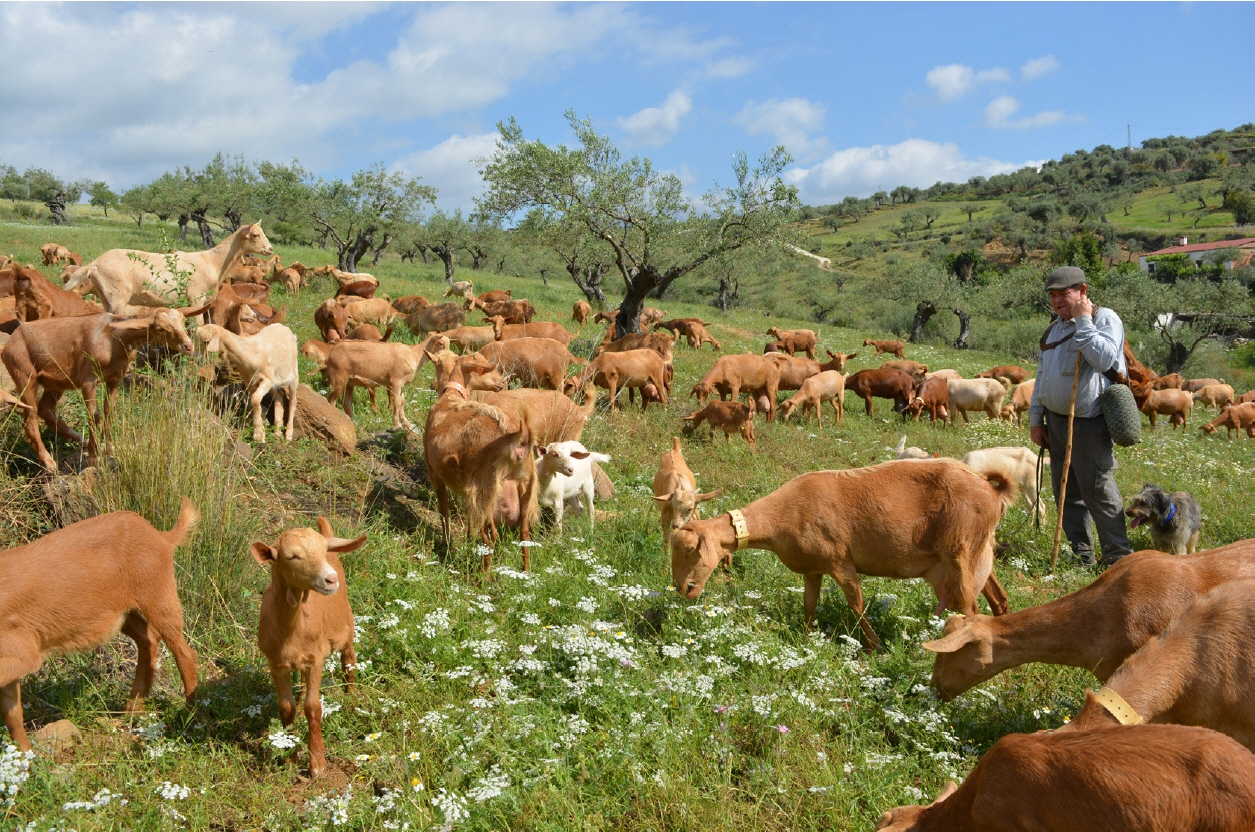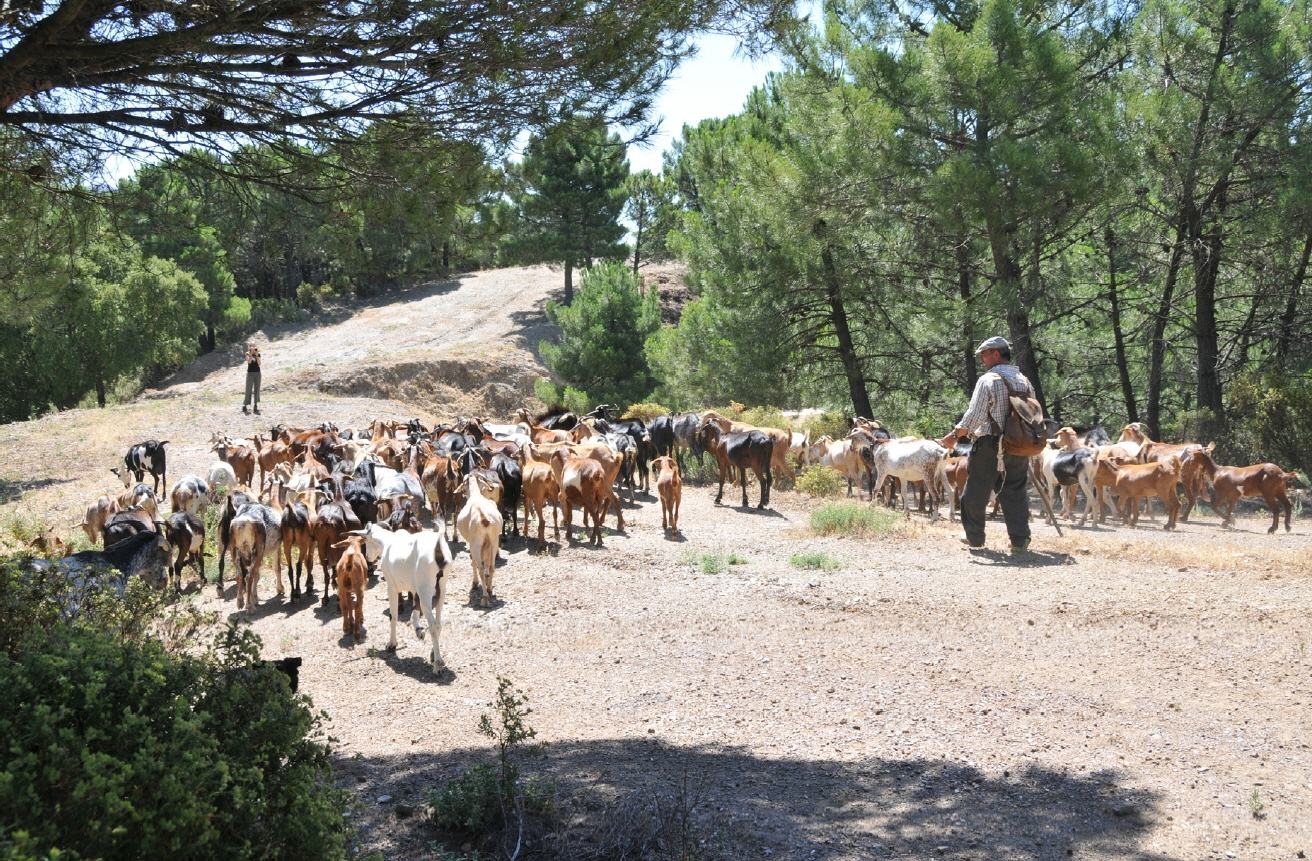2. García García M. Some remarks on the provision of animal products to urban centres in medieval Islamic Iberia: The cases of Madinat Ilbirah (Granada) and Cercadilla (Cordova). Quat Int 2017; 460:86–96.
https://doi.org/10.1016/j.quaint.2016.06.021

4. Mellado M. The Criolla Goat in Latin America. Vet Mex 1997; 28:333–43. (In Spanish)
5. Hubert B. Goat production and forests in the French Mediterranean area. Ethnozootechnie 1988; 41:87–104. (In French)
8. Calatrava J, Sayadi S. Milk production systems in rural development: the case of goat cheese making at the Eastern Alpujarras. EAAP Publication 2003; 99:37–46.

9. FAOSTAT: Live animals and livestock processed stats [Internet]. Rome, Italy: Food and Agriculture Organization (FAO); 2017. [cited 2019 Jan 10]. Available from:
http://www.fao.org/faostat/en/
11. Dubeuf JP. Characteristics and diversity of the dairy goat production systems and industry around the world. Structural, market and organisational conditions for their development. Tecnol Ciên Agropec 2010; 4:25–31.
12. Moreno-Fernandez J, Alférez MJM, Diaz-Castro J, López-Aliaga I. Goat milk and oxidative stress during iron-deficiency anemia recoveryWatson RR, Collier RJ, Preedy VR, editorsNutrients in dairy and their implications on health and disease. London, UK: Academic Press; 2017. p. 427–34.
https://doi.org/10.1016/B978-0-12-809762-5.00033-4
15. Ruiz-Mirazo J, Robles AB, González-Rebollar JL. Two-year evaluation of fuelbreaks grazed by livestock in the wildfire prevention program in Andalusia (Spain). Agric Ecosyst Environ 2011; 141:13–22.
https://doi.org/10.1016/j.agee.2011.02.002

16. Mena Y, Ruiz-Mirazo J, Ruiz FA, Castel JM. Characterization and typification of small ruminant farms providing fuelbreak grazing services for wildfire prevention in Andalusia. (Spain). Sci Total Environ 2016; 544:211–9.
https://doi.org/10.1016/j.scitotenv.2015.11.088


19. ARCA. National indigenous breed information system [Internet]. Spanish Ministery of Agriculture, Fisheries and Food; [cited 2019 Jan 20]. Avalaible from:
https://servicio.mapama.gob.es/arca/ (In Spanish)
20. AAI. Data on breeds of indigenous Italian goats [Internet]. Italian Breeders Association; [cited 2019 Jan 20]. Avalaible from:
www.aia.it (In Italian)
21. Kukovics S. Sustainable Goat breeding and goat farming in Central and Eastern European countries. In : Proceddings of European Regional Conference on Goats Rome, Italy: Food and Agriculture Organization of the United Nations (FAO); 2014; p. 297
24. Ruiz Morales FA. Searching for the collaboration of European agents in the goat milk market. Tierras Caprino 2016; 15:28–33. (In Spanish)
26. Rubino R, Pizzilo M, Claps S, Boyazouglu J. Dairy farm management systems: goatsFuquay JW, editorEncyclopedia of dairy sciences. Elsevier Ltd; 2011. p. 59–66.
28. Mena-Guerrero Y, Gutiérrez-Peña R, Ruiz-Morales FA, Delgado-Pertíñez M. Can dairy goat farms in mountain areas reach a satisfactory level of profitability without intensification? A case study in Andalusia (Spain). Agroecol Sustain Food Syst 2017; 41:614–34.
https://doi.org/10.1080/21683565.2017.1320620

29. Kukovics S, Horn P, Baranyai G, et al. Sustainable goat farming in central and eastern Europe and Hungary. Libro de actas deSustainablegoat breedingand goat farming in Central and Eastern europeancountries. Rome, Italy: Food and Agriculture Organization of the United Nations FAO; 2016. p. 7–30.
30. Ruíz FA, Castel JM, Mena Y. Labour characterization of Andalusian goat farms. Perspectives. Options Méditerranéennes: Série A. Séminaires Méditerranéens 2011; 100:349–54.
31. FNEC. French goat milk importations [Internet]. National Federation of Goat Breeders; [cited 2019 Jan 27]. Avalaible from:
http://www.fnec.fr (In French)
32. Pulina G, Milán MJ, Lavín MP, et al. Current production trends, farm structures, and economics of the dairy sheep and goat sectors. J Dairy Sci 2018; 101:6715–29.
https://doi.org/10.3168/jds.2017-14015


33. López Ruiz AL, Barriga Velo D, Leal Muñoz C, Pedregosa Cabrero A, Ruiz Morales FA. The goat milk elaboration as a way to improve the profitability of farms: training and entrepreneurship. Tierras Caprino 2018; 24:85–9. (In Spanish)
34. Ruiz Morales FA, Fresno Baquero MR, Barriga Velo D, De la Haba Nuévalos E. The Spanish artisan goat cheese: an evolving industry. Tierras Caprino 2016; 16:44–50. (In Spanish)
36. De Groot RS, Alkemade R, Braat L, Hein L, Willemen L. Challenges in integrating the concept of ecosystem services and values in landscape planning, management and decision making. Ecol Complex 2010; 7:260–72.
https://doi.org/10.1016/j.ecocom.2009.10.006

37. Mancilla-Leytón JM, Pino Mejías R, Martín Vicente A. Do goats preserve the forest? Evaluating the effects of grazing goats on combustible Mediterranean scrub. Appl Veg Sci 2013; 16:63–73.
https://doi.org/10.1111/j.1654-109X.2012.01214.x

38. Perez-Neira D, Soler-Montiel M, Gutiérrez-Peña R, Mena-Guerrero Y. Energy Assesment of Pastoral Dairy Goat Husbandry from an Agroecologycal Economics Perspective. A Case Study in Andalusia (Spain). Sustainability 2018; 10:2838
https://doi.org/10.3390/su10082838

39. Gutiérrez-Peña R, Mena Y, Batalla I, Mancilla-Leyton JM. Carbon footprint of dairy goat production systems: A comparison of three contrasting grazing levels in the Sierra de Grazalema Natural Park (Southern Spain). J Environ Manag 2019; 232:993–8.
https://doi.org/10.1016/j.jenvman.2018.12.005

40. Dubeuf JP, Ruiz Morales FA, Mena Guerrero Y. Evolution of goat production systems in the Mediterranean basin: Between ecological intensification and ecologically intensive production systems. Small Rumin Res 2018; 163:2–9.
https://doi.org/10.1016/j.smallrumres.2017.10.012

42. Mena Y, Nahed J, Ruiz FA, Sanchez B, Ruiz RJ, Castel JM. Evaluating mountain goat dairy systems for conversion to the organic model, using a multicriteria method. Animal 2011; 6:693–703.
https://doi.org/10.1017/S175173111100190X










 PDF Links
PDF Links PubReader
PubReader ePub Link
ePub Link Full text via DOI
Full text via DOI Full text via PMC
Full text via PMC Download Citation
Download Citation Print
Print







